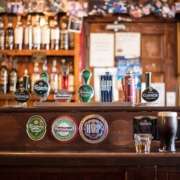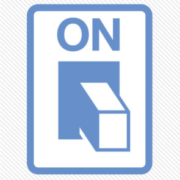Branding terms made simple
Brand
When you say ‘brand’ most people think immediately of a logo: Ferrari, Gucci, Levi’s, Mars or whatever. But in reality a brand is much more than its logo. A brand is what you feel about a company and its products: speed, luxury, coolness, indulgence and so on. A strong brand will appropriate adjectives like that and build all their communications around emphasising those associations in the minds of consumers. Everything from the packaging to the design of the stores must be designed in line with this brand positioning to reinforce again and again what makes a particular product unique.
The aim of all this, of course, is to be able to ask a higher price for your product. Even though your product and your competitor’s might be identical, if your brand identity is stronger you will be able to charge a premium price because people feel good about buying yours rather than your rival’s. It’s not logical or scientific at all, just a raw emotion – an emotion that’s worth billions.
Table of Contents
1. Brand Architecture
When a brand becomes successful, one way to exploit it is to create sub-brands. Because people trust and will pay more money for your first brand, chances are they will be willing to do the same for a second, third and fourth brand under the same umbrella. A good example is Virgin. It started off as a record label but now it has diversified to create many sub-brands including Virgin Atlantic (airline), Virgin Mobile (phones), Virgin Cola (drinks) and Virgin Trains to name but a few.
Virgin’s “umbrella brand” approach (i.e. basing each sub-brand on the main company name) is one example of a “brand architecture” – how a company organises its brands.
Another way of organising a portfolio of products is to use an “endorsed brands” approach. These are another kind of sub-brand but have an identity of their own. For example “Dairy Milk” chocolate or “PlayStation” both have standalone identities but are more often referred to using the master brand’s endorsement: “Cadbury’s Dairy Milk” or “Sony PlayStation”.
The third kind of brand architecture is for a product to stand completely alone from its parent. Although part of the Coca Cola group, “Barcardi Breezers” are marketed without any obvious reference to the parent company. “Dove Soap” is also a strong standalone brand even though part of the multinational P&G group.
2. Brand Audit
This is basically a review of where a brand is at, how it’s performing, and identifying areas where things could be improved by brand strategy consultants. It could involve commissioning research into how consumers perceive and feel about a brand. What do they like and dislike about the brand?
It could also embrace a SWOT analysis of the brand which identifies specific Strengths, Weaknesses, Opportunities and Threats associated with the brand.
And there could be a review of brand collateral which refers to all the items used to promote a brand including brochures, leaflets, stickers, banners… anything really that’s used to get the brand out here in front of consumers. An audit would check that all these various pieces are consistent in tone and style so that they’re supporting the brand to the max.
3. Brand Equity
In short, this amounts to what a brand is worth. Notoriously difficult to quantify, it involves considering how many consumers recognise the brand, how well they regard it and how easy it is to change that into sales. Brand equity ebbs and flows. Who’d have imagined twenty or thirty years ago that world-beating brands like Pan-Am or Polaroid could possibly go out of business? Or, more recently, how could the tech world’s darling Blackberry brand go from hero to zero after a couple of catastrophic software glitches?
4. Brand Image vs Brand Identity
Brand image is basically what people think about your brand. It includes what the brand stands for (maybe it’s particularly green or organic, for example). Blackberry’s brand image went from being very positive (unique, robust, easy to use) to rather negative (unreliable, accident prone) overnight.
Brand identity is concerned with the graphical elements that express your brand and how they’re used. So, there’s the logo at the centre of everything but also the company name and strapline. The brand identity dictates how these elements are used to maintain consistency across all collateral marketing materials.









